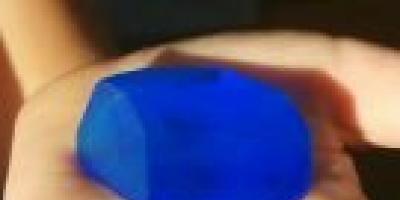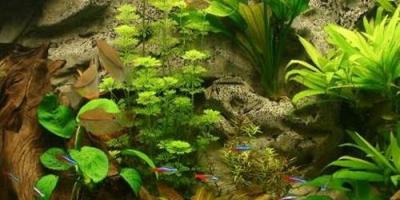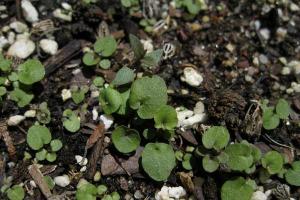One fine day, I decided to visit with a camera a number of manufacturing enterprises in our Republic of Ingushetia, which seemed interesting to me. And the first on the list was the Shadi company, which specializes in processing fish skin and producing products from it. The products, as we will see later, are very different, here, as they say, there is enough imagination. The company operates a full production cycle, doing everything itself from start to finish.
A very friendly and polite employee of the company met me in the building; she happily showed me everything and took me wherever possible. Here is a workshop where the production of leather goods themselves is already taking place. The paintings on the walls are made of fish skin.


In the same workshop there is a rack with various finished fish skins. The leather is represented by four types of fish: carp, salmon, sturgeon and lumpfish. It is important to note that the technology for processing the skin of lumpfish and sturgeon fish was developed by this company, the first in the world. The leather, although thin, is, according to workers, stronger than any other and is natural Gore-Tex.

Here is sturgeon skin. The kind girl, to my surprise, said that the guarantee that the paint will not come off is 100 years (!)


And here is the skin of that same lumpfish.

Then I was shown the products, but unfortunately I found myself at a time when the leather warehouses were almost empty and I didn’t see many products, for example, I didn’t see shoes.
But what I saw is enough. Here are the pants. Of course they are for the amateur)

In this photo, there are two very fashionable girls in fish skin. 
Wallets 
Belt. 
Here's a lady's hat. I think a lady wearing a hat like this would be the center of attention at an English horse racing hat parade. 
The assortment was also presented with materials for decorative finishing of premises. 
I have seen Vovnushki in gold and silver, but I have not yet seen them in fish skin. 
Another attribute for fashionistas. 



I noticed a bunch of certificates, certificates and other...s and...TV 
Next, I was taken to the so-called wet workshop, where fish raw materials are processed. But the object was secret, the world's first technology for processing the skin of sturgeon and lumpfish is not that. Here I was content with only a few photos.
A drum, raw skin and a special solution are thrown in there and all this apparently spins for a while)) 
This method is used to dye the skin. After painting, it is varnished using a special film. They said the paint was natural. 
By the way, the production is almost waste-free; even the scales are used as a decorative element. 
Then they took me to the carpentry shop. It is entirely dedicated to the production of leather goods. For example, there are boxes, but unfortunately by the time I arrived they had already been sold. It was this workshop that made the greatest impression on me, because... it was equipped with everything a carpenter could want. The equipment is obviously expensive. 
Here is a 3D milling machine. If you want your three-dimensional portrait made of wood, no problem, this machine will do everything. 
Here is an example of how the machine works. 
And this is simply fantastic. This is a laser engraver. You can engrave almost anything with it. They opened the lid especially for me and demonstrated the work. 

Here is an example of the engraver's work.
Because They cut wood in the workshop and the hoods are not installed everywhere; there is a lot of dust in the workshop. And attention to the task: Determine, by looking at the keyboard, the login and password for classmates of the CNC machine operator))) 
To my surprise, they told me that the company does not have a store in Ingushetia, and all the goods go to Moscow and for export to Europe. And residents of Ingushetia can only buy by coming to the plant itself. I think store owners can increase their profits by selling their products, because while it is unique on the Ingushetian market, the vast majority of people do not know about the existence of the plant and its products and they are not represented on the market.
Attention! The materials published in this article should primarily be of interest to fishing enterprises that are interested in selling raw materials, and fashion designers who sew expensive and exclusive clothes to order and work with leather.
However, this material can be of great benefit to the “ordinary” person who wants to open his own interesting business and has an extra 50 thousand dollars. Vladimir Levchenko, owner of the Andrefish company, will explain the technology to you.
Vladimir Levchenko is the author of a business idea that is unique on the Russian market. He learned to produce fish skin from raw materials himself, suitable for making products. At the same time, of course, they helped him, but all the advice he received did not give very good results in practice. And the most difficult thing was to turn fish skin into industrial production. And he did it. Neither a doctor of science from the relevant research institute, nor a craftsman friend who produces 10-15 skins as a hobby wanted what Vladimir Levchenko could do. He combined art and technology and got a business.
Around 40 companies around the world are involved in the production of fish skin. In the USSR, boots made of fish skin (from catfish) were sewn for senior officers. In Canada, golf gloves are made from fish skin - this material is ideal for this sport. Fish skin is a favorite material for designer fashion. Many fashion designers have made a name for themselves by making bags and shoes from such leather.
Having come up with his technology, Levchenko wants to raise the market and is not going to do it alone. He needs partners to organize a joint venture and start production. How much will the technology cost those interested? Vladimir Levchenko says that 50 thousand dollars are needed to go to the site and start the process. He is also ready to cooperate with fishing enterprises interested in selling raw materials. They can supply raw materials and sell products, and the businessman will only engage in production.
Hurry to this unique market! The fact is that foreigners are already ready to work with an amazing Russian company that turns processing waste into premium raw materials. But foreigners are interested in large volumes, while the Andrefish company itself is ready to work with batches of no more than 200 kilograms.
Norwegian suppliers offer to pick up fish skins from warehouses almost free of charge. But our people don’t want to get involved. Why? But the fact is that Russian fishing enterprises do not want and do not know how to skin fish. Only in Russia, in supermarkets, fish are sold on the skin - so there is more weight and less fuss.
Here is another nuance of Russian life! But the moment is not far off when it will be adopted by law that the Russian fish producer is obliged to skin it and dispose of the skins. In Norway, there has long been a law on mandatory disposal of fish skins.
The Australians want to supply Levchenko’s enterprise with mirror carp skins, and the Israelis with carp skins. After processing, the product has a value ten times higher than the cost of the original raw materials!
What is the most unique thing about the technology invented by a domestic craftsman? No leather odor! This is precisely the know-how that the entrepreneur struggled with. But not only that. He learned to dye the skin evenly, to skin the skins for two minutes (and furrier-artists spend up to two hours on this process by hand), he learned to put ten thousand skins into a drum at once...
Which skin is suitable? Sturgeon leather is recognized as the best leather, but for obvious reasons it is expensive. Sturgeon skin has a unique texture - it is dotted with stars, fir trees and “spikes”, which seem to have been applied by the skilful hand of an engraver. But here Mother Nature tried. The leather of salmon, trout, carp and pike has also proven itself to be excellent. In addition, fish skin is superior in quality to cowhide and pork skin, and is not afraid of water - the products can be washed in a machine.
Shoes and clothes are already made from fish “fur”; vases, books and even…motorcycles are covered with it. By the way, Vladimir Levchenko is well known at the Mosshoes exhibition. However, it is easier for Russian shoemakers to give orders to the Chinese. Well, the entrepreneur himself went to China and established his own business contacts there.
However, think about it, gentlemen, private shoemakers: you sew one pair of shoes from fish skin, spending 4 skins and paying 400 rubles for it. A pair of shoes will cost 20 thousand rubles. The result is a tenfold profit!
Trout model from Alexander Petrov
Fish skin is now called the material of the 21st century - it is fashionable and sophisticated. Having a handbag made of rainbow trout or shoes made of salmon is prestigious and exotic. Last season designer “Christian Dior” John Galliano created pink salmon leather shoes that were sold in Dior boutiques around the world.
Scottish company Skini” recently launched a line of salmon bikinis and promotes them as an alternative to exotic animal skin products. The European Union is investing in a project to improve salmon skin harvesting.
For a long time, fish skin was only sold in gift shops at water parks and seaside resorts. Norwegians still associate it with the hardships of World War II, when many people used fish skin to avoid going barefoot.
However, Russia has its own traditions in the production of fish skin products. Wuji is the ancient name of one of the Far Eastern tribes. It was them, the Amur region aborigines, who were called in China “dressed in fish skin.” The peoples of the Amur actually made clothes, shoes, and even boat sails from it. Salmon skin had a lot of advantages in the eyes of taiga hunters and fishermen. It was durable, lightweight, did not allow water to pass through, and could be decorated with embroidery, appliqué, and painting. And not only these people mastered the art of making it - the Ainu, one of the most mysterious peoples of the planet, now living only in the north of Japan, wore fish skin. True, the dressing of fish skin was extremely difficult, and in addition, a large amount of fish was required. But the ancient inhabitants of the Amur region were capable of these tasks.

Traditional clothing of the coastal peoples
One of the descendants of the small tribe of Orochi, who opened a small workshop for dressing fish skins in the Khabarovsk Territory, brought the art of dressing skins to the present day. He was attracted by the opportunity to revive the traditions of his people: “A people disappears when its culture disappears,” says the master. “I want our homes to have robes and bags made of fish skin again.”
But most of those who are involved in fish skin now strive, first of all, to introduce this unique material into use. In addition, the use of fish skins fits into environmental conventions. In Europe, fish consumption has increased in recent years and, accordingly, the amount of waste. France alone consumes about 20 thousand tons of smoked salmon annually, throwing away about a thousand tons of skin. In Spain and Scandinavia, fish consumption is even higher. Under pressure from strict European regulations on industrial waste, fish processing plants and smokehouses are looking for new ways to sell their waste rather than pay to recycle it. Russian rules are not yet so strict, but the art of processing fish skins is developing here too. Word Andrey Alexandrovich Kovalenko, Deputy Director of the TVK-Style company:
We started processing fish skin two years ago, and almost all these two years we have not stopped experimenting - after all, processing the skin of each fish requires its own technology. The main problems are to cleanse the skin of fat and scales and get rid of a specific odor. Now, after two years of activity, we can say that we have learned to work with this material. Now we prefer to tan salmon and trout skins - these skins are quite large and uniform in size, easy to work with and retain an exotic “fishy” appearance when dressed. Carp leather is interesting. But it is difficult to work with due to the fact that it is a very oily fish and removing all the fat without using chemicals is extremely labor-intensive. We refused to use cod skin because it turns out ugly and of low quality. Catfish are good at work, but as a result their skin does not have that prized exotic fishy look. In general, fish skin is almost twice as strong as cattle skins and is wear-resistant: two years ago, workers in the workshop covered a stool with pieces of different types of leather. All this time it was used every day, even in shoes, and it still looks like new.
- What can fish skin be used for?

Shoes from Irina Selitskaya
The widest application. Although, since it is processed manually, the manufacturing cost is high. The material is quite expensive: 1 sq. dm - $1.5. It can be used for accessories, in particular, we cooperate with a company that produces cases for mobile phones; for the manufacture of shoes and clothing. But, for example, a jacket requires 400–500 sq. dm of fish skin, which is quite expensive as a result.
Last year, at the opening of his Fashion House, Alexander Petrov showed a jacket made of light brown carp leather, a tight-fitting crimson coat-dress made of salmon leather, and items made of trout and halibut leather. The new material was noticed by experts. And then followed a whole collection with the eloquent name “FISHka” (remember that the English word fish is translated as “fish”), dedicated to this material. Petrov showed coats and jackets in which the trim, accessories and even beautiful roses were all made from fish skin. Mainly rainbow trout, carp, and salmon were used. By the way, the fashion designer himself appeared in public for some time in a natural-colored salmon jacket and gray salmon jeans with a worn effect. The St. Petersburg designer undoubtedly left his mark on history. To do this, he had to spend, by his own admission, six months studying a new ultra-light material and “produce” a certain number of models. At the same time, Petrov himself, when the conversation turned to fish skin, invariably mentioned that Irina Selitskaya from Moscow walked ahead of him. True, she worked mainly with shoes.
- What difficulties await you when working with “seafood”?

This is what carp skin looks like
If ordinary skin stretches approximately equally in any direction, then fish skin has a different structure in different directions. This must be taken into account when arranging the skins in order to avoid subsequent deformations in the design of the products. This feature of the material makes working with it very difficult.
- How promising is fish skin?
I'll say it briefly. This is the material of the future. There are a great variety of different arguments in this regard. I will cite only one, which at first glance is not the most important. Fish skin can and should be processed only with natural ingredients and not with harmful chemical components. This is very important from the point of view of global ecology. If you think about it, this is a very serious matter.
Well, perhaps this material has great prospects. In Vladivostok, models with fish skin are shown at a show of young designers, and in Murmansk they are going to launch the production of boots and jackets. And this is just the beginning of the return to high fashion and everyday life of the ancient art of the coastal peoples.
Elena Zalygina
Vladimir Khodakovsky
When preparing the material, materials from the websites www.newsru.com and the Internet encyclopedia “Northern Pacific” were used.
The peoples who inhabited the banks of the Amur - Nanai, Orochi, Nivkh and Ulchi - have been engaged in fishing since ancient times. They created fish meat for food, for leather, fish scales for sewing clothes, shoes, and various household items. The Amur people have perfectly mastered the craft of dressing and using fish skin. The amazingly beautiful clothes made from this material became a vivid example of the culture of the Amur peoples, who even received the name “fish-skinned people.”
The fish skin was processed by hand. First, the scales were removed from the fish, then they were thoroughly cleaned on both sides and washed several times in water, laid out on a smooth surface and left to dry for a day or two. Dry fish skin became very tough; in order to sew anything from it, the skins had to be crushed for several hours on a special machine with bone knives to process the leather. The process was labor-intensive and long; as a result of this artisanal preparation, fish skin was deprived of many valuable properties. Therefore, when fabrics such as satin, chintz, linen and silk became available, northern craftswomen stopped sewing clothes from this material.

But today we are seeing how the production of leather from fish scales is experiencing a new round of popularity, and at a qualitatively different level. Fish skin has become as exclusive as crocodile or snake skin. World-famous fashion designers have turned their attention to this amazing material. For example, Christian Dior began producing shoes from salmon leather, which has an original pink color. Salmon skin is one of the most durable and strong of all types of fish skin. Designers of the Argentine company Unisol, specializing in the production of footwear, have developed and released unique sneakers. The main material for these sports shoes is fish skin from the American shad. But not only shoes are made from this material. The Scottish company Skinny has released a collection of swimsuits made from salmon skin.

Basically, the size of fish skin is small, but this disadvantage is compensated by the unique pattern on its surface and a rich range of colors. Therefore, most often the material is used for the production of small but fashionable products: shoes, handbags, purses, gloves, belts, and various jewelry.

But diving suits are made from the skin of sharks and stingrays and are even used to make furniture. large fish are surprisingly durable. In general, fish skin is more wear-resistant and durable than the skin of any animal. This is due to the fact that the fibers in fish skin are located very close to each other. In addition, only fish skin is waterproof.
Another undoubted advantage of fish skin is its environmental friendliness. To date, scientists have not discovered a single virus that can be transmitted from fish to humans. So it is impossible to contract any disease from fish skin, unlike the skin of pigs and cows.
Ingush inventor and tanner Akhmed Shadiev developed uniquetechnologies for processing fish skins. Ahmedone of those who creates a positive image and is able to change attitudes towards the Caucasus and Caucasians. He made a project that became known throughout the world- in Chile, Canada, China, Europe. These technologies are promising for Russia - the creation of a large number of jobs, the formation of new creative projects, the opening of new directions in light industry.The range of fish skins on display amazes not only with its rich color palette, but also with the variety of species: salmon, trout, grass carp, carp, sturgeon, sterlet, lumpfish. And this is a small fraction of what can be done at the Shadi enterprise in Ingushetia. According to the technologists of this company, they have technologies for almost any skin. But the most important thing is that this enterprise created the world's first industrial technology for processing fish skins and the quality of the finished leather complies with GOST and TU. Fish leather has a number of advantages over mammalian leather: it is thin and elastic, while stronger than any other cattle leather, it has an exotic appearance, it is 100% aniline leather, it can be dyed in any color and the scope of this leather is very wide - shoes, clothing, furniture, decorative arts, leather goods, belts, car tuning, souvenirs, hats, interior finishing materials and much more.
In the carpentry shop of the Shadi company, souvenirs in the national style are being manufactured from valuable wood species using fish skin.

Boxes made of solid oak, ash, and beech are inlaid with sturgeon and carp leather, decorated with salmon leather with engravings of towers and the nature of Ingushetia made using laser equipment.





The main stages of leather tanning take place in such drums: soaking, tanning, dyeing and greasing processes. The materials used in these processes are based on plant components. 
A new development by Shadi - wall tiles made of fish skin. Only environmentally friendly materials were used in the production of this tile. Along with a chic appearance, this tile combines such important characteristics as heat and sound insulation, ease of installation and the unlimited imagination of designers.

In the sewing workshop of the Shadi company, new models of leather goods, belts, bags, business leather folders, caskets and other products are being developed and introduced into production.
The Italian ironing and polishing machine is designed for finishing large cattle leathers. Because There is no special equipment for finishing fish skin; the company’s employees came up with a device that can be used to process fish skin using this machine.
Sturgeon leather is a special pride of the Shadi company. The technology for tanning sturgeon leather is incredibly complex, because each skin has about a hundred thousand spines-bones that need to be preserved, while the skin must be soft and elastic. To date, only the Shadi company has managed to do this in the world. Fish skin belongs to the class of exotic leathers such as crocodile, python, etc., but its important advantage is that the fish is not killed to make leather from it.
These products were made in collaboration with a wonderful shoemaker from the city of Volgograd, Vladimir Usatov.










